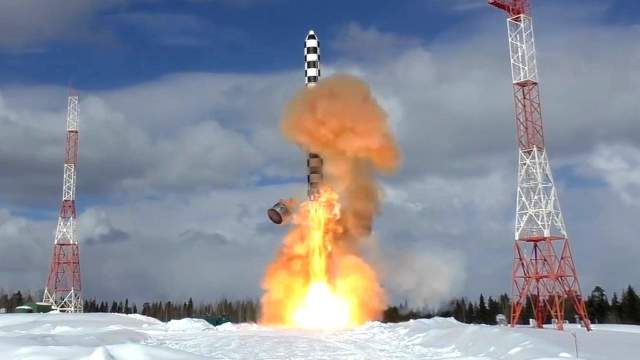And what opportunities will the novelty give to Strategic Missile ForcesLast year was the year of the beginning of flight tests and deployment of the newest Russian heavy liquid intercontinental ballistic missile RS-28 "Sarmat".
Today it is the most powerful combat missile in the world, and never before has the Russian industry produced such a complex and unique product in its capabilities. Izvestia was looking into what heavy intercontinental ballistic missiles (ICBMs) are in general and how the Sarmat is so different from other samples.
Project history
By 1987, the United States had decommissioned the Titan-2 heavy liquid ICBM, which carried the most powerful American thermonuclear warhead with a capacity of 9 megatons. At that time, the Strategic Missile Forces of the USSR were armed with the very missiles that were called "Satan" in the West — the R-36M and R-36M UTTH families. They were equipped with both warheads with a powerful thermonuclear charge of 20 megatons, and separable individual guidance warheads — ten warheads with a capacity of at least 500 kilotons. In 1988, they were replaced by the heavy rocket R-36M2 "Voevoda", which became the last modification of the legendary "Satan".
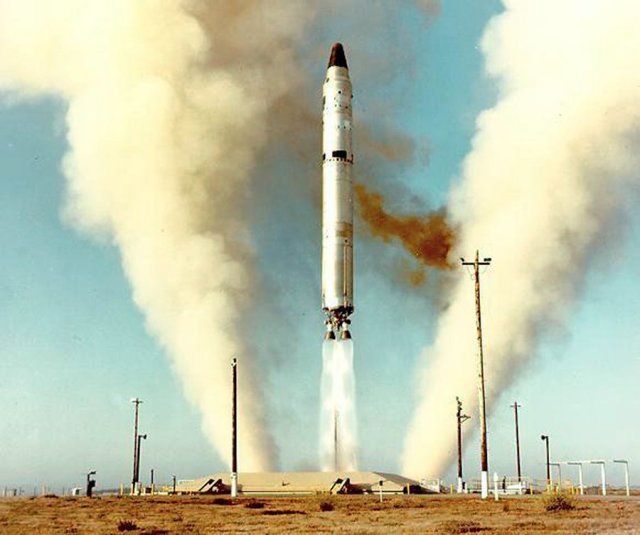 |
| Test launch of the American heavy liquid intercontinental ballistic missile "Titan-2". |
| Source: commons.wikimedia.org |
For its time, the Voevoda rocket was the crowning achievement of scientific and technological progress: an efficient design using the latest materials and processing methods, a computerized control system, the most powerful engines at that time, a protective coating of the hull, readiness for use in a nuclear attack - when enemy nuclear warheads explode around the launch site. Voevoda was the best heavy ICBM of the 1980s, which could carry 14 warheads to the target, but this was prohibited by the strategic nuclear forces limitation treaties.
And then a variety of means of overcoming the missile defense systems of a potential enemy — light and heavy false targets, jamming systems and other means of masking the combat order of the Voevoda warheads were placed in the place that was freed from four combat units. The full—fledged development of this rocket began in 1982, and in the process of creation, it was laid in opposition to the concept of "Star Wars" that was born then overseas - the Strategic Defense Initiative (SOI), which promised to decapitate Soviet missiles from outer space. SOY did not happen, but the "Voivode" was created, including taking into account its potential capabilities. And it became the best and most powerful missile of the Strategic Missile Forces.
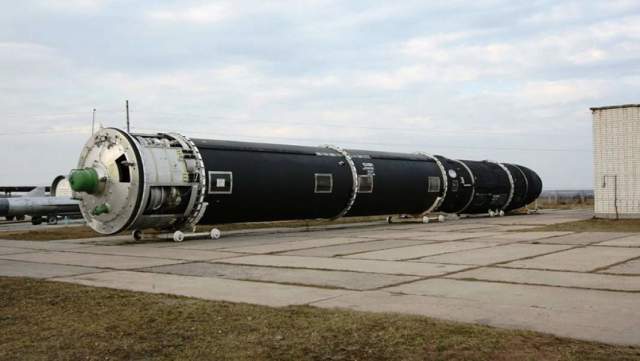
Intercontinental ballistic missile R-36M2 "Voevoda"
Image Source: Photo: commons.wikimedia.org
The creation of the Voivode was carried out by the Dnepropetrovsk Yuzhnoye Design Bureau — the patrimony of Mikhail Yangel, the creator of all Soviet heavy missiles of the R-16 / R-36 family, which carried both heavy thermonuclear warheads and the first separable warheads. By the beginning of the 1990s, all the most advanced in combat rocket engineering had been assembled in the Yuzhnoye Design Bureau. And all this remained outside of Russia after the collapse of the USSR.
In the early 2000s, a program was adopted to rearm the strategic missile forces of Russia — it was then that the work at the Moscow Institute of Thermal Engineering on the development of a multi-headed and more advanced solid-fuel rocket "Yars" intensified. NPO Mashinostroeniya began work on the development of the hypersonic aeroballistic combat unit "4202", which became the core of the Avangard combat system, and in the mid-2000s the question arose about the preparation of a replacement for the "Voivodes".
Why do we need missiles of this class? If we can place carriers of 500 warheads in 50 heavily protected mine launchers that can literally leave the positional area under nuclear fire, then this significantly increases the stability and capabilities of our entire counter-response nuclear potential.
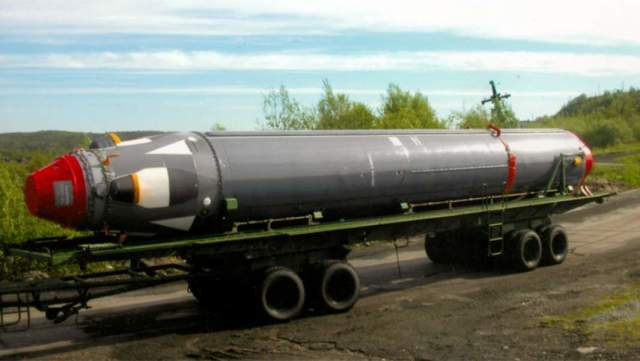
A sea-based missile of the type R-29RMU "Sineva" on a transport unit
Image source: Photo: press service of JSC "GRC Makeev"
The development of a new heavy rocket was entrusted to those design bureaus that created the most efficient liquid rockets. The head developer of Sarmat was the Makeev State Missile Center, which is famous for very effective sea-based missiles of the type R-29RMU "Sineva" and not only. The cooperation also included one of the oldest enterprises of the rocket industry — NPO Mashinostroenie (Reutov), which at one time created the most massive UR-100 ICBMs, and then carried out work on hypersonic guided combat units. The state contract for the implementation of the Sarmat ROC was signed between the GRC im. Makeev and the Russian Ministry of Defense in June 2011. It is from this time that the development of a new rocket is underway.
At the final stage
In 2018, "Sarmat" went out to conduct throwing launches at the Plesetsk test site. They showed the fidelity of the solutions chosen for implementation — the rocket was launched from a converted "Voevodovskaya" mine launcher, smoothly reached a height of 30-50 m, the main engines of the first stage were launched, and the multi-ton machine was on course. During the throwing tests, the missiles did not leave the test site and fell to the ground a few kilometers from the launch pad. But such launches made it possible to check the entire process of launching the rocket.
Then the preparation for flight tests began. A series of missiles was being manufactured at the Krasnoyarsk Machine—Building Plant — these were already full-fledged Sarmatians that could carry their entire payload - from the Plesetsk landfill to the Kura target range in Kamchatka or to the Aquatoria Pacific Ocean area, where launches are carried out at maximum range.
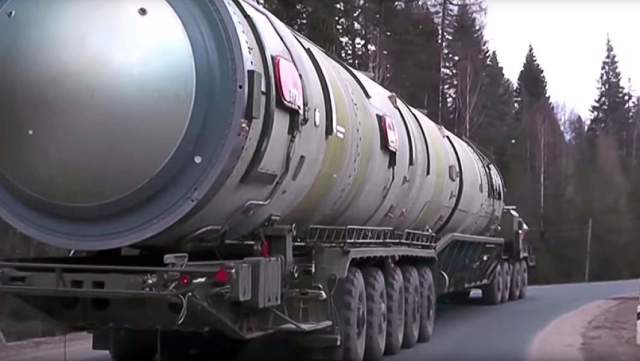
Transportation of heavy liquid intercontinental ballistic missile "Sarmat"
Image Source: Photo: TASS/Ministry of Defense of the Russian Federation
By the way, about the tactical and technical characteristics. The 15A28 / RS-28 Sarmat ICBM has a launch mass of at least 200 tons, a range of action with a maximum payload of at least 11 thousand km. The thrown mass of the Sarmat is about 10 tons, but it includes both combat equipment and a combat stage that spreads all the warheads of the missile along its trajectories.
What about the combat equipment? Classic conventional thermonuclear warheads will definitely be included in the main version of the Sarmat. Probably, there will be at least ten of them, and each can be of the same power as the "Voivode", i.e. about 500 kilotons. This is 500 thousand tons of TNT equivalent. One such warhead can destroy any ground target into dust. And Sarmat will use these warheads together with a complex of means of overcoming enemy missile defense (ABM). It will be extremely difficult to repel the impact of such a missile.
And with a smaller number of combat units, Sarmat can be used along a global trajectory — not along the direct shortest route to the target, but, for example, in a flyby of the South Pole. And then the blow will come from where they did not expect. The probability of breaking through the missile defense becomes even higher.
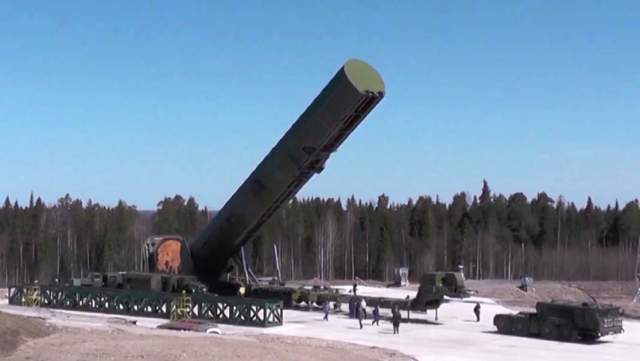
Loading of the Sarmat ballistic missile into the mine before launch during testing
Image source: Photo: RIA Novosti/Ministry of Defense of the Russian Federation
In the following variants, the Sarmat will be equipped with hypersonic maneuvering combat units — similar to those that are currently installed on the Avangard complexes. Such blocks are heavier and there will be an estimated three to five of them on the Sarmat. Modern missile defense does not yet know how to hit such hypersonic gliders, and with them the probability of successfully overcoming any defensive barriers is approaching 100%. And this is the guarantee of the inevitability of nuclear retaliation to any aggressor.
What is the result? In 2022, flight tests of the new heavy liquid ICBM "Sarmat" were successfully launched. Work has begun on the preparation of launch positions in the missile compound in Uzhur (Krasnoyarsk Territory). The serial production of rockets has started at the Krasnoyarsk Machine Plant.
What are the plans? Continue and successfully complete flight tests and begin missile deployment. In the next two or three years, the Sarmatians will completely replace the Voivodes and with virtually no alterations of the mine launchers. At least 50 ICBMs will be on combat duty and will strengthen the Strategic Missile Forces in the coming years. And it will be a rocket that was created from scratch in modern Russia.
Dmitry Kornev
